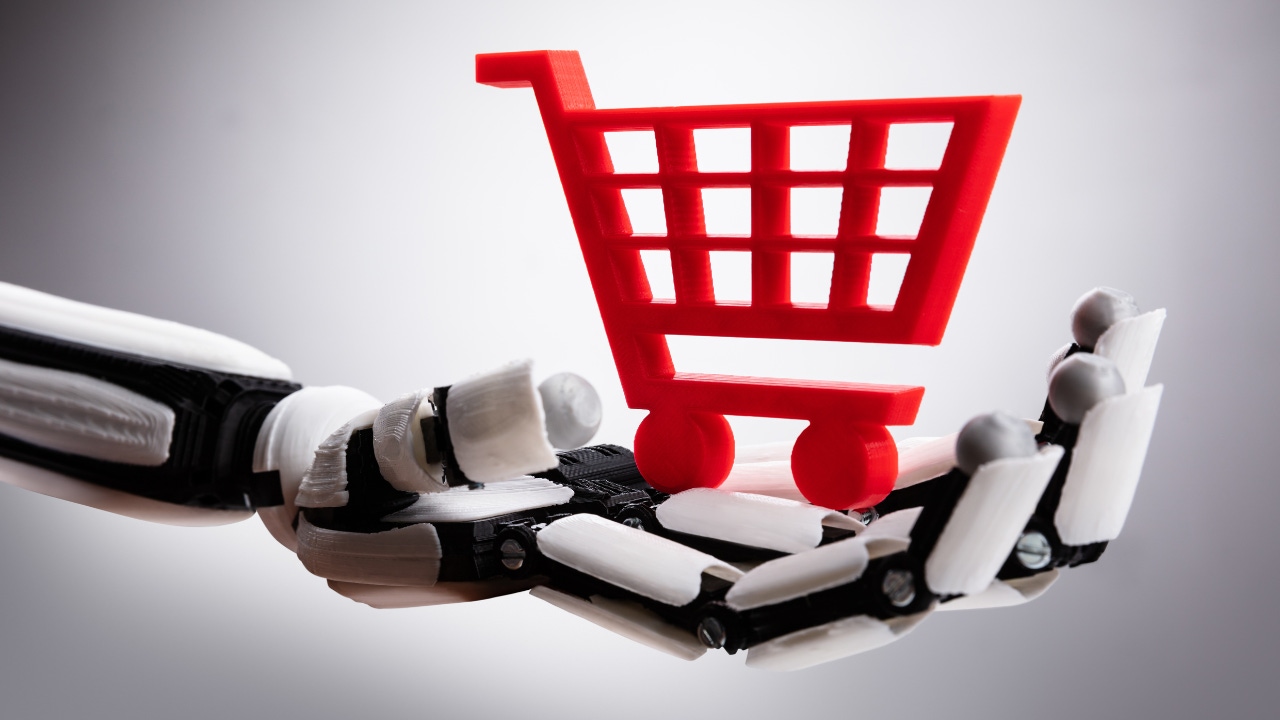A forum for contributed pieces from industry thought leaders, retailers, wholesalers and manufacturers. The views expressed are those of the authors.
How AI, and the automated store ecosystem, will transform stores in the next decadeHow AI, and the automated store ecosystem, will transform stores in the next decade
Retailers will create fully dynamic spaces that shift based on customer behavior, traffic patterns, and even individual preferences

Retailers today are facing heightened pressures from rising costs, labor shortages, climate-related stressors on the supply chain, and increased competition from major players in the ecommerce sector like Walmart and Amazon.
As brick-and-mortar leaders face these market headwinds, they’re leaning on data-driven tools to help them keep up and forge ahead. Within the next decade, AI will transform the retail operating model—by improving efficiency and reimagining how stores architect customer interest and loyalty.
As consumer expectations rise, the AI and data systems implemented today are key to future success. Already, AI is driving efficiencies in inventory management, personalized shopping, and demand forecasting. But the AI-powered store of the not-too-distant future will be a living, breathing ecosystem, shaped by the precise needs of consumers, from the store interior to the supply chain and beyond.
Store interiors: more adaptive than ever
Today, inventory-tracking systems provide valuable insights about what’s on shelves and how products move. But we’re still working with fragmented data and static spaces that result in inefficiencies, costing retailers 6% gross sales and 5% operating margin. Without real-time, cohesive data integration, retailers struggle to adjust inventory levels or merchandising strategies quickly enough to meet demand, leaving them vulnerable to disruptions and fluctuating consumer needs.
Ten years from now, store interiors will become living, adaptable environments. Using AI and real-time data, layouts and product placements will continuously evolve to optimize shopping. Retailers will create fully dynamic spaces that shift based on customer behavior, traffic patterns, and even individual preferences.
Dynamic merchandising: AI will adjust product placements and shelf layouts in real time to optimize visibility and sales. Electronic shelf labels and digital signage can update pricing and promotions instantly, reflecting current demand and inventory levels. The moment a best-selling item starts trending, it’ll get prime real estate on-shelf before you even think about buying it
Personalized store navigation: Imagine entering a store and receiving a custom map generated just for you. You’ll input your grocery list into the store’s app, and AI will plot the perfect path for your trip. No more backtracking for that forgotten ingredient—AI will guide you based on foot traffic, shelf availability, and the fastest route
Responsive store layouts: Stores of the future won’t be rigid. If one section gets too crowded, AI will recommend shifting the store’s layout on the fly—store teams can then step in to relocate displays or remove other obstacles to smooth out the flow
Shrink prevention: AI won’t just detect theft—it will prevent it. Predictive analytics can pinpoint where shrink is likely to occur by analyzing patterns in stock discrepancies or areas with higher loss risk. Retailers can tighten up inventory checks and focus security where it’s needed most
These in-store innovations are supported by equally advanced backend systems. Let’s explore how automation is reshaping the supply chain, the backbone of retail operations.
Supply chains: resilient, fast, and predictive
A seamless in-store experience relies on an efficient and responsive supply chain. While automation and increased visibility have made huge improvements, stockouts and delivery inefficiencies still plague retailers, causing delays, inventory shortages or surpluses, and an all-around less reliable shopping experience.
By 2035, AI will turn supply chains into self-healing systems. AI will predict, analyze, and adapt to potential disruptions before they even occur, creating a truly autonomous network that anticipates demand and routes products in ways that are not only more efficient, but also better for the planet.
Real-time inventory management: Automated systems will provide up-to-the-minute stock levels across the entire supply chain. This visibility allows retailers to respond quickly to demand changes and minimize stockouts or overstock situations.
Predictive demand forecasting: In the future, demand shifts won’t catch retailers off-guard. AI will significantly improve forecasting accuracy by analyzing diverse data sources, drawing on everything from historical data and weather patterns to viral TikTok trends. Stores will be fully stocked with the right products before the demand surge even starts
Automated logistics: Self-driving fleets will run on AI, with real-time traffic predictions and weather insights ensuring that deliveries arrive faster and more sustainably. Retailers will optimize routes for efficiency, cost, and environmental impact—delivering products just hours after they’re ordered
Forging ahead: retail’s on-shelf opportunity
Right now, customer loyalty is a top priority for retailers, as consumers shift spend in response to rising costs and retailers vie for every shopper dollar. But the biggest opportunity for retailers today lies on the store shelf itself, where consumer decisions are made. For all the advances in retail technology, most retailers still have shockingly limited visibility into what’s happening inside of stores. That’s where the right AI solutions will drive the most profitable changes long-term.
Automation is already proving to improve stockouts, pricing and promotions, allocation planning, and even store team and customer satisfaction. This technology is set to drive an estimated $143.3B in the next three years alone. This isn’t AI hype—these are real solutions making a measurable difference for those who’ve adopted them.
The path to 2035
The retail revolution of 2035 is already in motion. And the stores of the future will be built on the data foundations retailers are laying today. To make this transformation a reality, retailers can begin integrating AI into their operations through:
Pilot programs: Start with small-scale projects to test the feasibility of the technology before rolling out broader initiatives
Partnerships: Collaborate with technology providers – especially those with proven capabilities, global production resources, multiple chain-wide deployments, and customer successes – to co-innovate, test, and learn
Employee training: Equip teams with the skills they need to embrace these technologies by investing in training and development programs
By embracing automation and AI technologies, retailers can build the foundation for an interconnected, efficient, and customer-centric future. It’s coming soon and in many ways, it’s already here.
About the Author
You May Also Like





.webp?width=300&auto=webp&quality=80&disable=upscale)
